 Weird Stuff
Weird Stuff  Weird Stuff
Weird Stuff  Humans
Humans The Ten Most Lethal Gunslingers of the Old West
 Misconceptions
Misconceptions 10 Phony Myths and Urban Legends That Just Won’t Die
 History
History 10 Amazing Roman Epitaphs
 Weird Stuff
Weird Stuff 10 Niche Subcultures That Are More Popular Than You Might Think
 Mysteries
Mysteries 10 Tragic Disappearances and Deaths in Joshua Tree National Park
 History
History 10 Ways Childhood Really Sucked in the Old West
 Music
Music 10 Name Origins of Famous Bands from the 1990s
 Religion
Religion 10 Biggest Turnarounds by the Catholic Church
 Weird Stuff
Weird Stuff 10 Unbelievable Times Laws Had Unintended Consequences
 Weird Stuff
Weird Stuff 10 Cool and Creepy Facts about Collecting Tears
 Humans
Humans The Ten Most Lethal Gunslingers of the Old West
 Misconceptions
Misconceptions 10 Phony Myths and Urban Legends That Just Won’t Die
Who's Behind Listverse?

Jamie Frater
Head Editor
Jamie founded Listverse due to an insatiable desire to share fascinating, obscure, and bizarre facts. He has been a guest speaker on numerous national radio and television stations and is a five time published author.
More About Us History
History 10 Amazing Roman Epitaphs
 Weird Stuff
Weird Stuff 10 Niche Subcultures That Are More Popular Than You Might Think
 Mysteries
Mysteries 10 Tragic Disappearances and Deaths in Joshua Tree National Park
 History
History 10 Ways Childhood Really Sucked in the Old West
 Music
Music 10 Name Origins of Famous Bands from the 1990s
 Religion
Religion 10 Biggest Turnarounds by the Catholic Church
 Weird Stuff
Weird Stuff 10 Unbelievable Times Laws Had Unintended Consequences
10 Horrors Of Dentistry Throughout History
Have you ever wondered what people did before there were dentists? Tooth decay and pain aren’t a modern problem and have plagued society for thousands of years. It’s no secret that dental pain can be one of the most agonizing miseries one can endure. Thankfully, we have several thousand years of collective knowledge as well as modern medicine to draw upon to make the process of keeping our teeth healthy as pain-free as possible—luxuries which the dentists and, even worse, the patients of old didn’t have.
Even imagining back as recent as more modern times before the use of local anesthetics and powerful painkillers, we can’t help but wince in discomfort at the mere thought of being held down by several people while some doctor of the day reached in with iron tools and ripped one of our teeth out, our mouths pried open with brutish Bronze Age–esque equipment. Here is the horrific history of dentistry in ten parts.
10 Dentistry Is Born
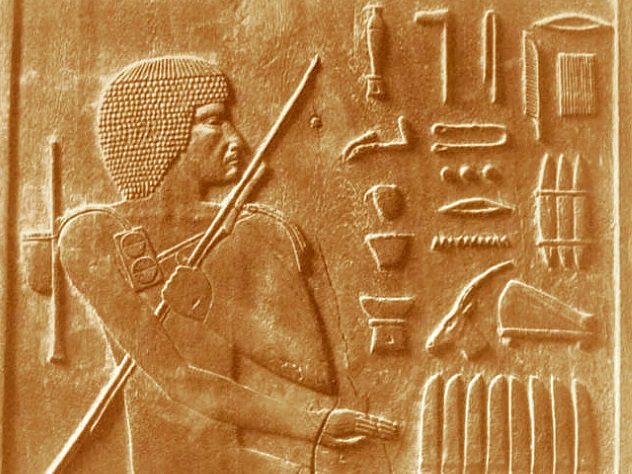
For as much pain and suffering as toothaches can cause, it’s a little surprising that dentists are scarce throughout many massive cultures of the ancient world, even in civilizations where physicians were plentiful. The documented story of dentistry begins with a culture who had rough times and rough diets: the ancient Egyptians.
The Egyptian diet consisted largely of grains and cereal foods, and the ancients didn’t have the quality (or sterile) materials and utensils from which to make breads safely that we do today. Many metals, minerals, and other nasty things found their way into the bread of ancient Egypt, causing tooth decay and a plethora of dental problems. The Egyptians also found it nearly impossible to keep sand out of their food, something that further contributed to the severe health issues of the mouth that were rampant in that time.
The first recorded dentist comes from around 2660 BC and is named Hesyre (also called Hesy-Ra). He was chief of dentists and also the chief physician to the pharoah Djoser.[1] At this time, most dental work consisted of shoving things into the decayed, chipped, or broken tooth, gum area, or abscess in hopes of easing the pain. These items ranged from honey to herbs and plants to possibly even gold, though it is uncertain if dental procedures using gold as a filling material took place postmortem. Nonetheless, it’s very safe to say that any procedures done in these times were excruciatingly painful.
9 Complexity Begins
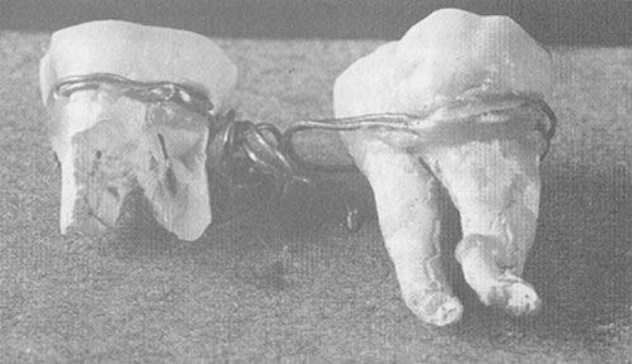
Going on the only records we have, it is debated whether or not full-on surgery had taken place yet, or if there were or were not tooth extractions at this point, as evidence is limited among the remains we have. In this early period, we do see three cases of possible prosthetic work—the ancient Egyptians were the first to have gold teeth. They would often drill and use gold wiring, weaving through teeth in complex fashions. This was possibly to hold teeth in place or perhaps cosmetic.[2]
By 2500 BC, dentistry had given birth to the first instance of what is still considered a nightmarish procedure today: drilling. The evidence of remains from that time period show small holes symmetrically drilled on the outside of a tooth which appear to have been man-made. It seems they’d learned to drill in order to drain the pus and release the pressure of an abscess. Imagining going through this procedure without the luxury of modern medicine is almost unthinkable.
8 The Bow Drill
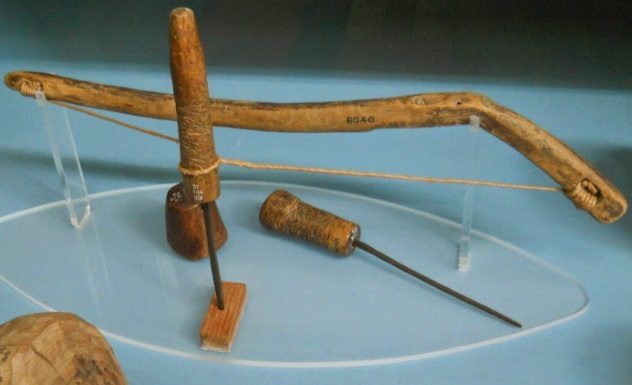
So how do you drill into someone’s teeth without the aid of modern electricity or finely tuned instruments? Enter the bow drill, a device not unlike a bow for an arrow, only the string is tied around a sharpened spike or stake of bronze. The string would be wound around the spike, and the bow could be moved back and forth, almost like playing a cello, and this would cause the spike to spin.[3]
This was definitely not a quick or easy process for drilling into someone’s mouth, and by no stretch of the imagination was it comfortable in the slightest. Fortunately, alcohol had been produced in ancient Egypt as early as about 4000 BC. Even with a stiff drink, this procedure was undoubtedly miserable.
7 More Intricate Tools
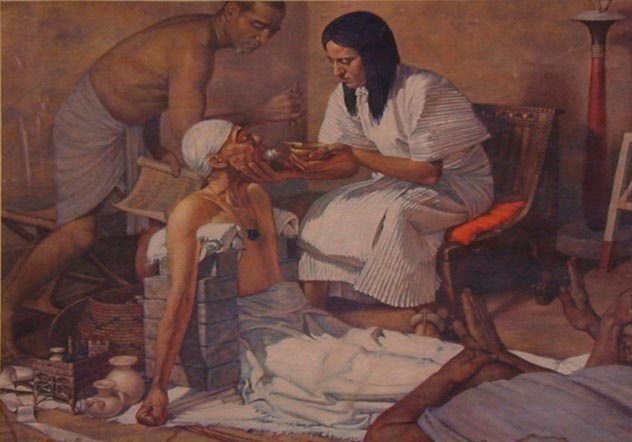
As Egyptian culture and medicine went on, the need for more precise and intricate tools to solve the pervasive and ubiquitous dental problems in their society became much more prevalent. By at least as far back as 2500 BC, there is evidence of all-out dental surgery, complete with pliers, scalpels, and other tools.
By this time, the Egyptians had the tools and knowledge necessary to carry out many surgeries, up to and including prosthetics, brain surgery, and more. They were certainly drilling into cavities to clean them out and removing teeth that were in bad shape.[4] From here, dentistry would slowly but surely become more and more complex until it reached the practice that we know and love. Well, maybe not love . . . more like tolerate.
6 The Etruscans
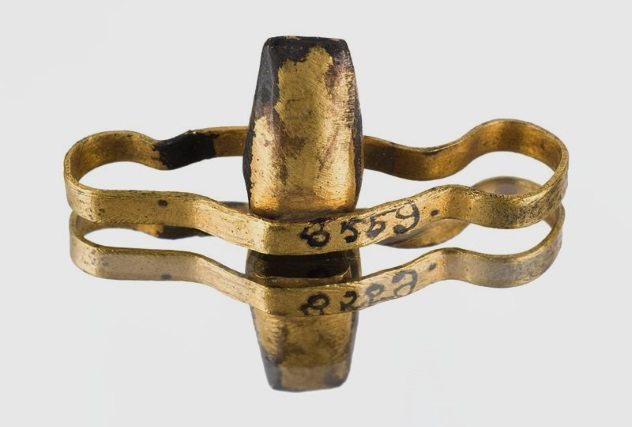
The Etruscans were an Italian civilization which predated the Romans and survived from about 700 until 400 BC, when Rome conquered them, and the Etruscans assimilated into what were the humble beginnings of Rome. They deserve an extremely honorable mention here because of their many innovative contributions to dentistry over the course of their existence. Much of Etruscan culture would be adopted into Roman culture and would survive the course of history due to the later rise of the Roman Empire.
By 700 BC, the Etruscans were already doing complete dental implants, using animal teeth and gold fillings. They even figured out a way to heat and solder metals into exposed nerves and cavities in order to stop the pain of having the pulp and nerve endings of a tooth exposed to the elements and debris.[5] The Etruscans also used animal teeth and bone to create the first cosmetics, and though they wouldn’t last as long as the prosthetic teeth of today, they were easily attainable and easy to interchange, making this method a viable option until around the 1800s.
While the Etruscans advanced civilization in many great ways, and we will be forever indebted to them, few today would want their teeth soldered together and fused with metal without the aid of modern anesthetics.
5 Ancient Greece
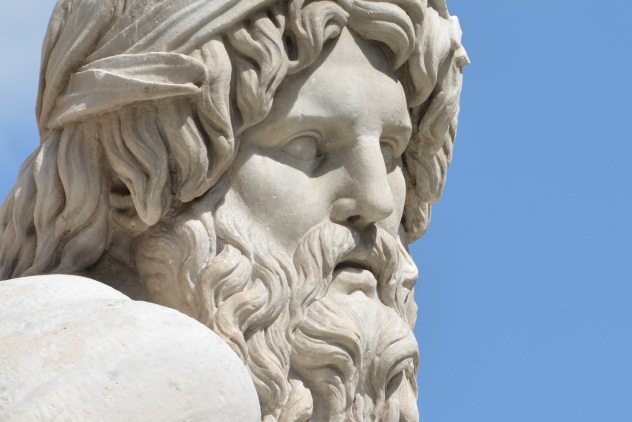
For as advanced of a civilization as ancient Greece was, they were well behind the others when it came to dentistry, which was largely due to their philosophy and warlike nature. Greeks believed strength and beauty to be cardinal virtues, and thus, the pain of a cavity or abscess was a small price to pay to be able to keep a tooth in your mouth. With pain being a sign of weakness, asking a physician to remove a tooth was a surefire way to lose social status.
The best someone suffering from severe tooth pain in ancient Greece could hope for would be to have a cloth, which had absorbed various herbs and such, shoved into the tooth to prevent food from getting inside it. Many people died from infections due to this avoidance of pulling teeth. Most of the time, they’d simply ask the gods to remove their problems and hope for the best.[6] Great . . . just great.
4 Medieval Dentistry
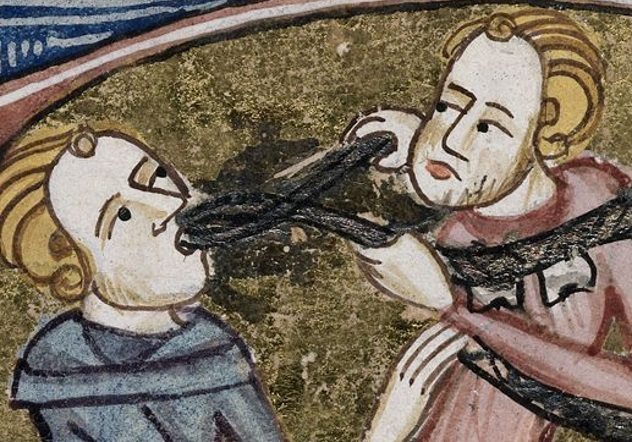
Believe it or not, the medieval times were a point in history that saw great advancements in the field of dentistry, both in terms of accuracy of knowledge and the tools to fix problems, but one major development was preventative measures: Thus, dental hygiene was born.
While fluoride and alcohol weren’t readily available options like they are today in toothpaste and mouthwash, medieval Europe saw people learning to clean their teeth and remove all sorts of undesirables from their mouths by wiping their teeth with cleaning cloths. This also aided in having good breath. While the extremely high cost of sugar during that period helped the people of the time avoid tooth problems, there were, for the wealthier classes, mouthwashes containing vinegar and other ingredients which would kill bacteria and freshen breath.
In 1158, Hildegarde of Bingen recommended:
One who wishes to have hard, healthy teeth should take pure, cold water into his mouth in the morning, when he gets out of bed. He should hold it for a little while in his mouth so that the mucus around his teeth become soft, and so this water might wash his teeth. If he does this often, the mucus around his teeth will not increase, and his teeth will remain healthy. Since the mucus adheres to the teeth during sleep, when the person rises from sleep he should clean them with cold water, which cleans teeth better than warm water. Warm water makes them more fragile.[7]
By the middle ages, preventative dental care was in full swing, with great attention to the various ways one could keep one’s teeth in both good health and good looks.
3 The Birth Of Tooth Whitening

We often hear and think of modern society as shallow and superficial, only caring about outward appearances rather than depth and character. If that’s the case, we’re hardly alone in history. Medieval cultures were obsessed with the cleanliness of their teeth, and whitening was a big part of dental hygiene and care during that period. Many brews and concoctions would be assembled, sold, and implemented as part of a regimen to keep teeth sparkly white, just as we see the slew of products advertising the same results on infomercials and in dentists’ offices today. De Ornatu Mulierum, a text written in the 11th century by Trotula de Ruggiero that translates to About Women’s Cosmetics, reads:
The teeth are whitened thus. Take burnt white marble and burnt date pits and white natron, a red tile, salt, and pumice. From all of these make a powder in which damp wool has been wrapped in a fine linen cloth. Rub the teeth inside and out.
The woman should wash her mouth after dinner with very good wine. Then she ought to dry very well and wipe with a new white cloth. Finally, let her chew each day fennel or lovage or parsley, which is better to chew because it gives off a good smell and cleans good gums and makes the teeth very white.[8]
2 Toward The World Of Dentures
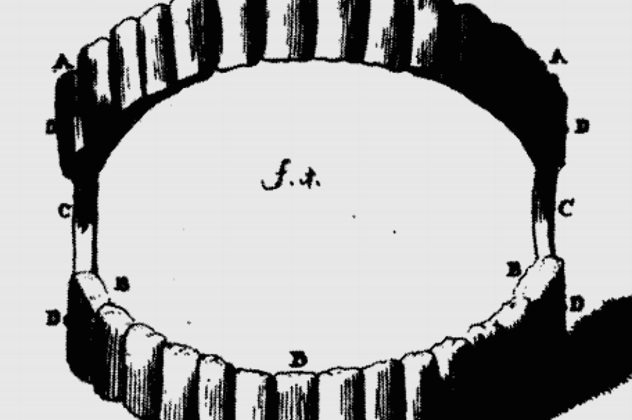
As time went on, preventative dental care and extractions weren’t enough. World trade and global commerce made sugars much, much more affordable for the average person to eat, and many of the poor were still plagued by malnutrition, which caused tooth and bone decay. While replacement teeth had been a staple since the Etruscans, full sets of bridges and dentures were inevitable in the course of dental history.
By the 14th and 15th centuries, dentists were already cosmetic surgeons capable of sculpting bridges and full denture sets. How did they do this? By fashioning the bones of cows into a shape that closely resembled teeth and fusing them into the mouths of the poor patients who needed dentures. They would wire them in with gold wiring to hold them in place, and if the dentures were knocked loose, they would simply fuse them again with gold wire.[9] It’s safe to say that this process involved “sewing” this gold wire into the gums, jaws, or both. No thanks.
1 Dentures From The Dead
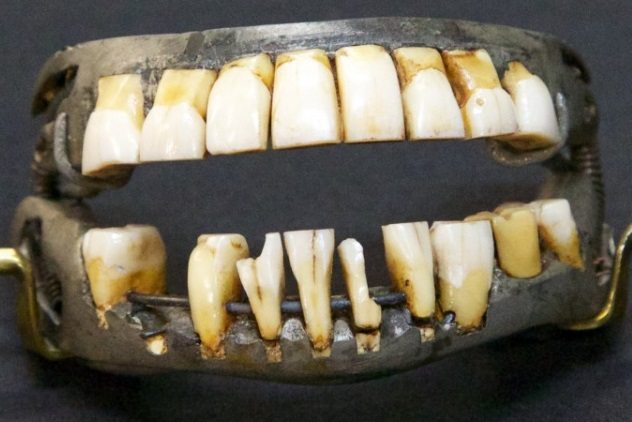
Organ donation had to start somewhere, and when it came to getting dentures, the choice between having teeth and being pain-free or not having teeth and being in absolute agony was kind of a no-brainer. Fashioning teeth out of cow bones, however, was a process carried out by specialists that not everyone could afford.
When looking around for surplus materials to use as false teeth, one solution, disturbing as it may be, stands out as an obvious choice: the teeth of the dead. Medieval people would often just take the teeth of corpses (which, in medieval times, were absolutely plentiful). Sometimes, the teeth would be pulled from several bodies to get a more comfortable match in creating false teeth for the suffering patient. How morbid is that?[10]
I like to write about philosophy, history, the macabre, dark, and horrific aspects of human reality and the world.
Cringe some more at the medical practices of the past on 10 Terrible Ideas In Medicine From The Past 100 Years and 10 Of The Most Bizarre Quack Doctor Cures In History.








